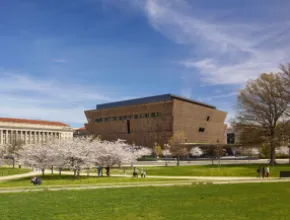The Inland Empire runs along Interstate 10 east of Los Angeles and includes sections of Riverside, Los Angeles and San Bernardino counties in an urban area that now stretches east nearly to the Nevada border. It’s packed with hotels, conference centers and other attractions—and any diversion that isn’t within the Inland Empire’s borders is just a short drive away.
With so many venues to choose from, we asked some knowledgeable Inland Empire CVB officials for their takes on some standout off-sites (and threw in a few of our own favorites) that let attendees get out of the conference room and into a lot more of what inland Southern California has to offer.
Ontario
The Spanish Empire tended to rule its colonies for the long haul, so of course, the Spanish imported the comforts of home. From the first planting of trees in California in 1769, olives became a California tradition and remain a major industry. The 1894 Graber Olive House taps into this tradition; it harvests a new crop of olives each fall but offers hospitality to visitors year-round. Small groups can meet on an outdoor lawn surrounded by redwood, olive and orange trees, or hold indoor events in the barn or olive-processing plant. During the fall they may get to see the picking and canning of olives that are a tree-ripened red, and may get a delicious lesson in food chemistry out of their visit.
From the Old California of the Graber house, visitors can easily transition to a New California building—the Frontier Project, a 14,200-square-foot showcase of conservation and efficiency. This LEED Platinum-certified structure was built by a foundation created by the Cucamonga Valley Water District, an organization with an obvious interest in demonstrating cutting-edge ways to conserve water and electricity—no small feat in this sunlight-heavy, water-light region.
The Frontier Project provides meeting space for groups amid a showcase model kitchen, living room, solar panel array, sustainable technologies and a native xeriscape (waterless) garden.
Another way to conserve water is to freeze it, and frozen is how the 20,000- square-foot floor of the Citizens Business Bank Arena usually stays for its primary use in ice sports. The Ontario Reign of the ECHL (formerly the East Coast Hockey League) play hockey here, and visitors can also see traveling shows such as Disney on Ice: Worlds of Fantasy or even play on the ice themselves.
“A family-owned business since 1894 still processing olives with the same recipe, a sustainable building with hands-on experiences and a 10,000-seat arena where some of the greatest music acts have performed provide groups with location choice to stimulate conversation and creativity,” says Sue Oxarart, director of communications for the Greater Ontario CVB.
San Bernardino
One standout venue in San Bernardino is the California Theatre for the Performing Arts, built in 1928 as a vaudeville and movie palace and still getting good use from its original “Mighty” Wurlitzer 216-pipe organ. Today, this classically decorated venue has 1,718 seats and attracts acts ranging from the San Bernardino Symphony Orchestra to performances of Sweeney Todd, Mary Poppins and, just in time for the holidays, a live stage version of A Charlie Brown Christmas.
Planners who want to get outside and go big should consider the San Manuel Amphitheatre, with about 10,900 seats and space for over 54,000 people on the surrounding lawn. It’s a great place to hear live music or gather large groups under Southern California’s perpetually sunny skies.
Riverside
The two off-site venues chosen by Debbi Guthrie, executive vice president at the Riverside CVB, will be immediately recognizable to anyone who has spent time in her city.
The first is the Mission Inn Hotel & Spa. This classic hotel first opened in 1876 as a 12-room adobe boardinghouse and has since grown to 238 rooms, but it visibly remains the very archetype of California Mission architecture as well as a centerpiece of downtown Riverside. For about five weeks surrounding Thanksgiving and New Year’s, the Mission Inn & Spa sponsors an annual Festival of Lights that includes holiday decorations and last year featured 225 hours of live entertainment, an ice-skating rink on Main Street, holiday vendors and visits by Santa Claus.
“It was recently named by USA Today Reader’s Choice Top 10 as the Best Public Lights Display in the U.S., and the Mission Inn is currently in second place for the USA Today Reader’s Choice Top 10 Best Historic Hotels in the U.S.,” Guthrie says.
Guthrie’s second pick is the historic Fox’s Riverside Theater, now known as the Fox Performing Arts Center. The original theater opened in 1929 as a cinema and vaudeville house, showed the first public screening of Gone with the Wind, and saw performances by luminaries such as Bing Crosby and Judy Garland. Closed for several years that included a complete, $55 million restoration by the city of Riverside, it’s now a showpiece with classic details that recall both the austere beauty of California missions and the lushness of 1920s movie palaces, all with state-of-the-art lighting and sound systems.
Claremont & Pomona
Pomona Chamber of Commerce Director Erica Frausto says the section of Pomona’s downtown called the Arts Colony is the city’s best off-site venue, being highly walkable and packed with numerous galleries, eateries and entertainment venues.
“Our downtown is an artists’ place. We have numerous museums that are gems in the Inland Empire—people come here and say, ‘This is in Pomona, we didn’t have to go to L.A. to see that?”
Ron Antonette, whose R.Antonette Communications handles public relations for the Claremont Chamber of Commerce, suggests Rancho Santa Ana Botanic Garden, the largest garden devoted to California-native plants. It’s both a botanic museum and a learning center of increasing importance to the state, with plants that are continually being stressed by the current years-long drought. Public walking and tram tours are available, and planners can also arrange private walking tours guided by one of the Rancho Santa Ana’s volunteer docents. Contact the Garden ahead of time to see which of its 6,000 plant species might be blooming or doing something else interesting during your visit.
Antonette also likes the Claremont Packing House, a historic building in the Claremont Village boutique and eatery area packed with boutiques, dining establishments and more. The Packing House offers visitors music (Hip Kitty Jazz & Fondue Lounge), dining (Casablanca Mediterranean Bar & Grill, Crepes de Paris and others), arts and cooking classes (Studio Claremont, Claremont Chefs Academy), coffee and dessert (Augie’s Coffee House, a la Minute) and more, all under a single roof.
Mountain Resorts
Dan McKernan, director of marketing and public relations at Big Bear Lake Resort Association, recommends Baldwin Lake Stables as a great way to discover the peaceful countryside of the Big Bear Valley on horseback.
“A relaxing ride into the wilderness is a splendid way to connect with nature, and Baldwin Lake Stables offers one-, two-, three- and four-hour rides.”
He’s also a fan of Big Bear Alpine Zoo, which has collected 140 animals representing 65 species, including grizzly bears, a pack of wolves, two snow leopard sisters and native species such as mountain lions, bobcats, coyotes and raccoons. The zoo is open year-round and conducts educational programs and feeding tours.
Visitors can also see the Big Bear from aboard the Miss Liberty, a paddlewheel tour boat that is Big Bear Lake’s largest. Trips include a 90-minute narrated tour highlighting Big Bear Lake’s history back to 1845 that passes notable points of interest such as Garstin Island, Big Bear Dam, Hollywood movie sets and some of the lake’s hottest fishing spots.
Temecula
History is on display in the Temecula Valley, says Annette Brown, marketing and PR manager at the Temecula Valley CVB.
“The Stone House at Temecula Creek Inn is extremely popular. It’s a granite building from the 1800s that’s surrounded by hundred-year-old oak trees on a beautiful green field, with a creek and golf course around it.”
While the Stone House can be a romantic venue for weddings, it’s also off to one side for privacy during corporate retreats, and has a nearly irresistible private bocce-ball court.
The Oak Mountain Winery is another attractive option for groups, Brown says, especially since in May it opened Southern California’s first wine cave, a venue that will have meeting rooms and event space. The winery’s Pavilion is also the site of live music on weekend afternoons, while groups can also gather at other times for gourmet cooking classes or private parties.





